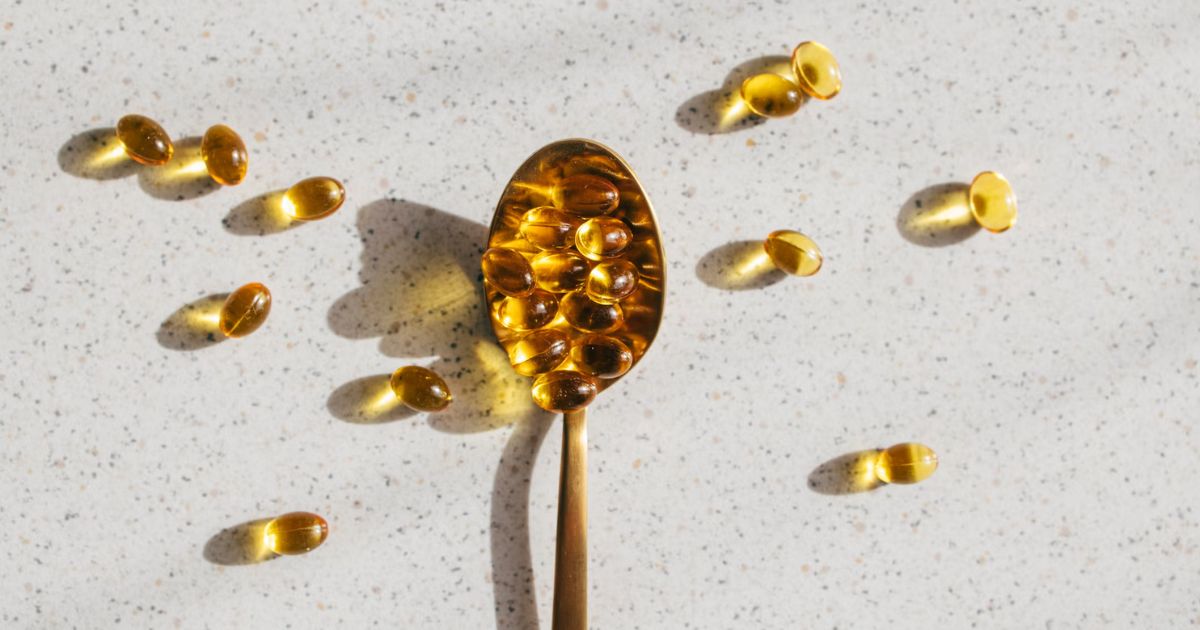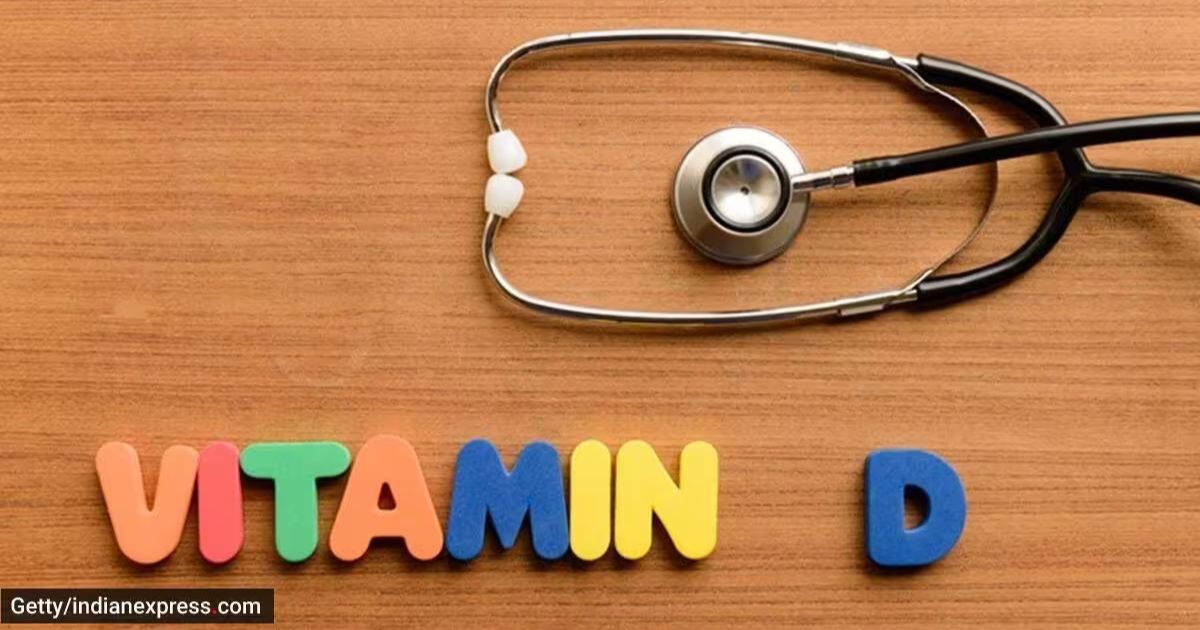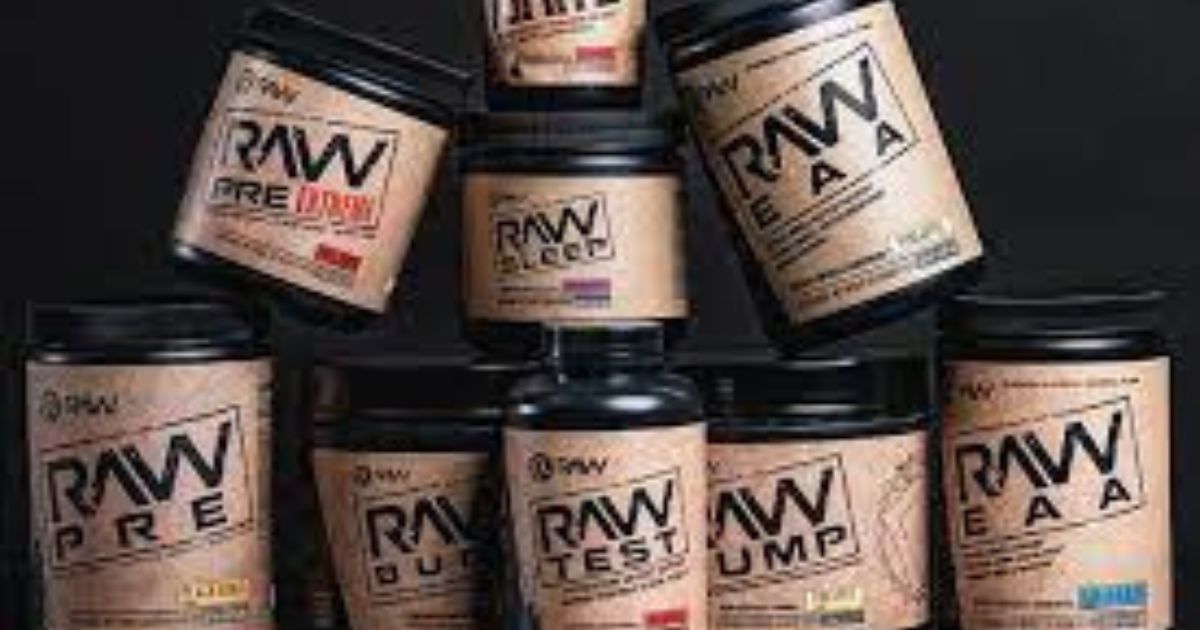Yes, you can get vitamin d on a cloudy day. Vitamin d is produced when your skin is exposed to sunlight, regardless of whether it’s sunny or cloudy.
However, the amount of vitamin d produced may be reduced on cloudy days, especially if it’s a thick cloud cover or if you live in an area with limited sunlight. Vitamin d is an essential nutrient that plays a vital role in the health of our bones, immune system, and overall well-being.
While sunlight is the best source of vitamin d, it’s not always possible to get enough sun exposure, especially in the winter or if you live in northern latitudes. For this reason, it’s crucial to get vitamin d from other sources, such as fatty fish, egg yolks, fortified foods, and supplements. This article will explore the relationship between vitamin d and sunlight, and how to get enough of this vital nutrient, even on cloudy days.

Importance Of Vitamin D
Can You Get Vitamin D On A Cloudy Day?
Many of us believe that we can only absorb vitamin d from sunlight. However, what happens if it’s a cloudy day? Is it even possible to get vitamin d? We’ll explore the importance of vitamin d and whether or not it’s possible to get it on a cloudy day.
Brief Introduction To What Vitamin D Is And Its Benefits
Vitamin d is a crucial nutrient that our body needs to function properly. Not only does it help in the absorption of calcium, but it also strengthens our bones. In addition, it plays a big role in keeping our immune system in check, as well as reducing inflammation.
There are two types of vitamin-d: vitamin d2 and vitamin d3. While vitamin d2 can be found in some plant-based foods, such as mushrooms, vitamin d3 is produced when our skin is exposed to sunlight.
Explanation Of How Vitamin D Deficiency Can Impact Health
- Risks of osteoporosis: If you’re vitamin d deficient, your bones are at a higher risk of becoming weak and brittle. This can lead to osteoporosis and an increased risk of fractures.
- Increased risk of certain cancers: Some studies have shown that a lack of vitamin-d can increase your risk of developing certain cancers, such as breast and prostate cancer.
- Increased risk of heart disease: Vitamin d plays a big role in regulating blood pressure and reducing inflammation, both of which are important in preventing heart disease. A deficiency in vitamin d can increase your risk of developing heart disease.
- Weakened immune system: Without enough vitamin-d, your immune system may not function as well, making you more susceptible to infections and illnesses.
- Increased risk of depression: Vitamin-d may play a role in regulating our mood, and studies have shown that people with a deficiency in vitamin d are more likely to develop depression.
Can You Get Vitamin-D On A Cloudy Day?

The answer is, yes! You can still get vitamin d on a cloudy day. While the strength of uvb rays (the rays that produce vitamin-d) may be weaker on a cloudy day, some still make it through the clouds.
It’s estimated that up to 80% of uvb rays can penetrate through light cloud cover.
However, it’s important to note that the amount of vitamin d produced can vary depending on a few factors. These include:
- Time of day: The highest levels of uvb rays are produced around midday.
- Skin color: People with darker skin may need more sun exposure to produce the same amount of vitamin d as someone with lighter skin.
- Amount of skin exposed: The more skin that’s exposed to the sun, the more vitamin d can be produced.
While it may be more difficult to get enough vitamin d on a cloudy day, it’s still possible. It’s important to get enough vitamin d, whether through sunlight or through supplements and food sources. So, go outside and enjoy some fresh air on a cloudy day – your body will thank you for it!
Sources Of Vitamin-D In Food
Can You Get Vitamin-D On A Cloudy Day
Vitamin-d, which is crucial for bone health and other functions, is commonly known as the “sunshine vitamin. ” However, can you get enough vitamin d on a cloudy day? The answer is yes, but not from sunshine alone. Here is everything you need to know about getting sufficient vitamin d from food sources, especially on cloudy days.
Vitamin d is not only produced by your body when your skin is exposed to sunlight, but it can also be found in food items. Here are a few food sources that are rich in vitamin d:
- Salmon: 3 ounces of cooked salmon contains more than 100% of the daily value of vitamin d.
- Tuna: 3 ounces of canned tuna fish provides around 40% of the daily value of vitamin d.
- Egg yolks: One large egg yolk contains around 6% of the daily value of vitamin d.
- Mushrooms: Some mushroom species can produce vitamin d when exposed to ultraviolet light.
- Fortified foods: Some breakfast cereals, milk, and other dairy products are often fortified with vitamin d.
Importance Of Incorporating These Foods In The Diet
It is difficult to get sufficient vitamin d through natural food sources alone, but incorporating these vitamin d-rich food items into your diet can help improve your vitamin d status. Consuming these foods frequently can help ensure that your body receives enough vitamin d for maintaining good health.
Vitamin-d plays a critical role in maintaining strong bone health and helps in the absorption of calcium, which is essential for bone health. It also has a significant impact on muscle function and the immune system.
Recipe Suggestions Containing Vitamin-D-Rich Ingredients
If you’re looking to incorporate more vitamin d into your diet, here are some recipe suggestions containing vitamin d-rich ingredients:
- Salmon cakes: A tasty way to enjoy salmon is by making salmon cakes. Mash together some cooked salmon, breadcrumbs, and egg, form the mixture into patties, and pan-fry with some oil.
- Tuna sandwich: A quick and easy way to add tuna to your diet is by making a tuna sandwich. Mix together canned tuna, mayonnaise, celery, onion, salt, pepper, and spread it between two slices of bread.
- Mushroom soup: Make a healthy and vitamin-d rich soup by preparing a mushroom soup. Sauté some sliced mushrooms, onions, and garlic, add chicken broth and boil. Then puree the soup until smooth and season with salt and pepper.
It’s essential to obtain sufficient vitamin d through food sources as it is challenging to get enough just from sunshine alone. Including vitamin-d rich foods in your diet is an excellent way to improve your vitamin d status and help maintain good bone health and overall wellbeing.
Sunlight As A Source Of Vitamin-D
Explaining The Role Of Sunlight In Vitamin-D Synthesis
Vitamin-d is a vital nutrient that helps the body absorb calcium to maintain proper bone health. One of the primary sources of obtaining vitamin d is through exposure to sunlight. When ultraviolet b (uvb) rays from the sun hit the skin, they trigger a reaction that helps produce vitamin d in the body.
This occurs when a cholesterol compound in the skin, called 7-dehydrocholesterol, absorbs uvb rays and transforms into vitamin d3.
Factors That Can Affect The Amount Of Vitamin D Synthesized Through Sunlight
Although sunlight is a primary source of vitamin-d, several factors can affect the absorption and production of this vitamin in the body. These factors include:
- Skin tone: Individuals with dark skin may require more prolonged periods of sun exposure to produce vitamin d due to higher melanin levels, which reduce the skin’s ability to absorb uvb rays.
- Time of day: Exposure to sunlight is most effective during midday when uvb rays are the strongest.
- Latitude and season: The angle of the sun and its strength of uvb rays can vary depending on location and time of year. This means that less vitamin d is produced or absorbed during winter months or in locations far from the equator.
- Clothing and sunscreen: Wearing clothing that covers most of the skin and applying sunscreen can prevent uvb rays from penetrating the skin, reducing the amount of vitamin d produced.
Techniques To Maximize The Exposure To Sunlight For Vitamin-D Synthesis
To optimize the production of vitamin d through sunlight, individuals can follow these tips:
- Get moderate sun exposure: Expose your skin to sunlight for 10-15 minutes per day, two to three times per week.
- Time it right: Try to get sun exposure during midday when uvb rays are the strongest.
- Skin exposure: Ensure at least 25% of the skin, such as the arms and face, are exposed to sunlight.
- Avoid sunscreen: If possible, avoid wearing sunscreen when exposed to sunlight as it can block uvb rays from being absorbed.
- Eat vitamin d rich foods: Incorporating foods rich in vitamin-d, such as fatty fish, eggs, and mushrooms, can also help maintain healthy vitamin d levels.
By understanding the role of sunlight in vitamin d synthesis and how to optimize exposure, individuals can ensure their bodies receive this essential nutrient for optimal health.
Alternatives To Sunlight On Cloudy Days
Can you get vitamin-d on a cloudy day: alternatives to sunlight on cloudy days
Living in areas with cloudy weather can limit the skin’s production of vitamin d. this essential vitamin is vital for the body’s bone health, immune system, and overall wellness. However, there are alternatives to sunlight that can help individuals get their daily recommended dose of vitamin d.
Explanation Of How Uvb Lamps And Tanning Beds Produce Vitamin-D
Uvb lamps and tanning beds are man-made alternatives to sunlight that are designed to assist the body in creating vitamin d. uvb lamps emit uvb rays, which penetrate the skin and cause the production of vitamin d. tanning beds use uvb lamps and also release uva rays, which are not required for vitamin d production.
Precautions While Using Uvb Lamps And Tanning Beds
While uvb lamps and tanning beds can assist in producing vitamin-d, users should be aware of the potential dangers of using these artificial sources. Here are a few precautions to consider:
- Excessive exposure to uvb lamps and tanning beds can increase the risk of developing skin cancer.
- Overuse of these sources can cause aging and damage to the skin.
- It is also essential to follow the instructions provided by the manufacturer carefully and wear protective eyewear to avoid eye damage.
Recommendations For The Frequency And Duration Of Using Uvb Lamps And Tanning Beds
To maximize the benefits and minimize the risks while using uvb lamps and tanning beds, consider the following recommendations:
- Most experts suggest using these sources no more than once a week.
- Also, keep the exposure time to less than 15 minutes per session, gradually increasing it on the advice of a medical professional.
- The frequency and duration should always be monitored to minimize the potential risk of skin damage and vitamin-d overdose.
While sunlight is the most natural way of getting vitamin d, there are other alternatives to sunlight that can help in the production of vitamin d. uvb lamps and tanning beds can be helpful, but it is critical to understand the potential risks and take precautions to avoid adverse effects.
Finally, consult with a medical professional before any supplementation and alternative means of getting vitamin-d.
Vitamin-D Supplements
Vitamin-d is an essential nutrient for maintaining a healthy body, and it’s particularly important for bone health. Since our bodies can produce vitamin d when exposed to sunlight, it’s possible to get enough of this nutrient through natural means.
However, many people struggle to get enough vitamin d through sunlight alone, especially during the winter months or on cloudy days. For those in this situation, taking vitamin d supplements can be a useful option. Here are the key points you need to know about vitamin d supplements.
Explanation Of The Role Of Supplements In Fulfilling Vitamin-D Requirements
Vitamin-d supplements are a convenient and effective way to get the amount of vitamin d that your body needs. They’re also a popular option for people who live in areas that receive minimal sunlight, who have darker skin, or who cover their skin for religious or cultural reasons.
Vitamin d supplements are designed to supplement vitamin-d from natural sources, such as sunlight and food. When taken as directed, they can help ensure that you’re getting enough vitamin d to support your body’s needs.
Types Of Supplements Available For Vitamin-D And Their Source
There are two forms of vitamin d that are commonly used in supplements: vitamin d2 (ergocalciferol) and vitamin d3 (cholecalciferol). Vitamin d2 is typically derived from plants, while vitamin d3 is mainly obtained from animal sources. Vitamin d3 is the preferred form for supplements since it’s closer to the form of vitamin d produced in the body and is better absorbed by the body.
Vitamin d supplements come in a range of forms, including tablets, capsules, and liquids.
Guidelines For Taking Vitamin-D Supplements
When taking vitamin-d supplements, it’s important to follow the recommended dose instructions on the label. The amount of vitamin d that you need can vary depending on factors such as age, weight, and overall health. Most vitamin d supplements provide between 1000 and 2000 iu (international units) of vitamin d per day.
However, some people may need to take higher doses if they have a deficiency, are unable to absorb vitamin d properly, or have a medical condition that affects their vitamin d levels. It’s best to consult a healthcare professional before taking high-dose vitamin d supplements.
Additionally, taking vitamin-d supplements with food can improve absorption.
Frequently Asked Questions On Can You Get Vitamin-D On A Cloudy Day
What Is Vitamin-D And Why Is It Important?
Vitamin is a fat-soluble vitamin for strong bones, teeth, and overall health. It also helps the body absorb and use calcium and phosphorus. Adequate amounts of vitamin D can improve muscle function and reduce the risk of diseases like cancer and diabetes.
How Do We Get Vitamin-D From Sunlight?
Vitamin d is sometimes called the “sunshine vitamin” because our body produces it when the skin is exposed to sunlight. The ultraviolet b (uvb) rays in the sunlight convert a substance called 7-dehydrocholesterol in the skin to vitamin d3 (cholecalciferol).
Can You Get Vitamin-D On A Cloudy Day?
Yes, you can still get vitamin d on a cloudy day. Uvb rays from the sun can penetrate through clouds, but the amount of the vitamin-d that you get depends on factors such as the intensity of the light, time of day, and the season.
Is Food A Good Source Of Vitamin-D?
Some foods such as fatty fish, egg yolk, and fortified foods, like milk, orange juice, and cereals, naturally contain vitamin-d. but, it is usually difficult to get necessary amounts of vitamin d through food alone. This is why sunlight exposure or supplements are recommended.
What Are Some Problems Caused By Low Vitamin-D Levels?
Low levels of vitamin-d can cause health problems like rickets in children, osteoporosis in adults, and increased risk of diabetes, certain cancers, depression, and bone fractures. Maintaining optimal vitamin d intake can help to prevent the development of these issues.
Conclusion
Overall, it’s clear that obtaining vitamin-d on a cloudy day is possible, but it takes a little bit of effort. By getting outside for short periods of time on cloudy days, taking vitamin-d supplements, and consuming food rich in vitamin-d, you can make sure that your body is getting the nourishing benefits of this essential nutrient.
The key is to remain mindful of your habits and prioritize your health. Vitamin-d is essential not just for your physical health, but for your mental well-being as well. Staying educated about the benefits and risks of vitamin intake, and taking steps to ensure that your body is getting enough of it, will help you live a healthier and happier life.
So make sure to get out there and enjoy the sun when it’s shining, and take care of your body even on rainy days.




